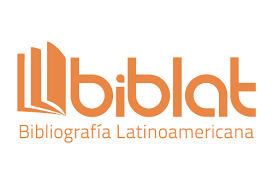The genesis of religious thought in childhood – II. A Psychoanalytic perspective
Resumen
Freud grounds the origins of religion in the essential fact thatevery child loves and admires his/her father, who seems to him the most omnipotent being. These childhood illusions are the bases for constructing the perennial roots of God mental representations in the human being. He declared religion as an obsessional neurosis, whose symptoms characterized by disturbed repetitions are attempts to ward off guilty feelings. Diverging from Freud’s driving model for the study of the genesis of religion, Rizzuto (1979) used the object relations model for her approach to religious phenomena, concluding that the construction of the sense of self is an outcome of a dialectical interaction with a God representation. This author understands God as a transitional representation, in Winnicottian terms, that can be recreated in each developmental crisis. For her, humankind is inherently religious, being religion a natural aspect of human development. God representation has the psychic function of self-integration and Ego cohesion, and religiosity starting in childhood can be a sign of health as a sign of pathology.Descargas
Los datos de descargas todavía no están disponibles.
Descargas
Cómo citar
L. R. Sousa, P., M. Oliveira, F., L. Horta, C., R. Sousa, F., S. Torres, A., & C. Pinheiro, E. (2019). The genesis of religious thought in childhood – II. A Psychoanalytic perspective. Razão E Fé , 4(2), 53-60. Recuperado a partir de https://revistas.ucpel.edu.br/rrf/article/view/2456
Número
Sección
Artigos
Licencia
Autores que publicam nesta revista concordam com os seguintes termos:- Autores mantém os direitos autorais e concedem à revista o direito de primeira publicação, com o trabalho simultaneamente licenciado sob a Licença Creative Commons Attribution que permite o compartilhamento do trabalho com reconhecimento da autoria e publicação inicial nesta revista.
- Autores têm autorização para assumir contratos adicionais separadamente, para distribuição não-exclusiva da versão do trabalho publicada nesta revista (ex.: publicar em repositório institucional ou como capítulo de livro), com reconhecimento de autoria e publicação inicial nesta revista.
- Autores têm permissão e são estimulados a publicar e distribuir seu trabalho online (ex.: em repositórios institucionais ou na sua página pessoal) a qualquer ponto antes ou durante o processo editorial, já que isso pode gerar alterações produtivas, bem como aumentar o impacto e a citação do trabalho publicado.





